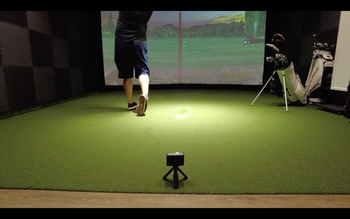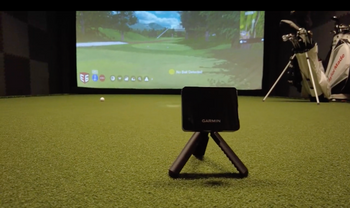You know how everyone's always talking about those fancy Garmin golf watches, but nobody really knows what the heck AutoShot actually does? Yeah, you're not the only one scratching your head at the clubhouse.
Let me break it down for you - these watches pack more tech than your buddy's new driver, which is great until you're trying to figure out what button does what. Trust me, I've been there, fumbling with settings while my foursome's waiting on the tee box.
Here's the deal: AutoShot's pretty sweet, but it's not magic. Think of it like having a caddie who tracks some of your shots but occasionally needs a coffee break. You hit your drive, and boom - the watch automatically records where you whacked it from. No pressing buttons, no pulling out your phone. It uses GPS and motion sensors to detect when you've taken a full swing.
But here's where it gets interesting - and where folks get confused. AutoShot catches your full shots pretty well, especially off the tee and fairway. It'll track that butter 7-iron you striped to the green. However, those little bump-and-runs around the green? Your 60-degree flop shot from the bunker? AutoShot might miss those completely. It's looking for that full swing motion, not your finesse game.
Now, if you're serious about tracking every single shot - including those painful three-putts we don't talk about - you'll need to pair your watch with Garmin's CT10 sensors. These little guys clip onto your club grips and talk to your watch. Every time you pull a club and swing, they're recording. Even that embarrassing chunk with your sand wedge gets logged. Brutal honesty, but that's how you improve, right?
The beauty of this setup? After your round, you get a complete picture of your game. Not just "I think I hit my driver 230 today" but actual data showing you averaged 227 yards over your last five rounds. You'll see patterns - like how you always miss right with your 5-iron or that your 150-yard club is actually your 7-iron, not your 6.
What I really dig about AutoShot is the convenience factor. You don't have to remember to track anything during your round. Just play golf. The watch handles the heavy lifting while you focus on not slicing it into the woods. Sure, you might need to clean up a few shots in the app afterward, but that takes like two minutes while you're having your post-round beer.
The limitations? Well, besides missing some short game shots, AutoShot can occasionally get confused. Hit a practice swing that's a little too enthusiastic? Might count as a shot. Playing in a scramble where you're hitting multiple balls? Good luck sorting that mess out later. And if you're one of those guys who takes five practice swings before every shot, the watch might think you're having the worst round of your life.
For most of us weekend warriors trying to break 90 (or 80 if you're feeling spicy), AutoShot gives you enough data to see where your game needs work without turning golf into a science experiment. Want the full tour-pro treatment with every shot tracked? Spring for those sensors. But if you just want to know how far you actually hit your clubs and see your basic shot patterns, the watch alone will do you solid.
Think of it this way - it's like upgrading from guessing distances with your eyes to using a rangefinder. Not perfect, but way better than what you had before. And honestly, sometimes knowing you consistently leave your approach shots 15 yards short is all the info you need to start sticking it closer.
Table of Contents
Discovering the Power of Garmin’s AutoShot Technology
Ever wondered how far you're actually hitting your clubs? Let me tell you about this game-changing tech that's built right into Garmin's golf and fitness watches.
Picture this: You're standing on the tee, driver in hand. You crush one down the fairway (or into the rough - we've all been there). Your Garmin watch on your lead wrist picks up that swing automatically. No buttons to press, no fiddling around. Once you walk or ride up to your ball, the watch's GPS figures out exactly how far that shot traveled.
Here's where it gets really sweet. You can tell the watch which club you just used, and it'll start building a profile of your distances. Hit enough 7-irons, and you'll know whether you're really a 150-yard player or if you've been kidding yourself all these years.
The magic happens after your round. Sync up with either the Garmin Golf or Garmin Connect apps, and boom - you've got all your shot data laid out like a buffet. Want to know why you came up short on that par 3? The data doesn't lie.
If you spring for their top-tier Approach S62, the watch actually starts suggesting clubs based on your real averages. No more guessing between a 6 and 7-iron when you're 165 out. The watch knows what you typically hit from there.
Now here's the rub - and it's kind of a big one. The tech needs a certain swing speed and impact force to register shots. Translation? Your putts won't show up. Neither will those delicate chips around the green or your bump-and-run shots. Even some of those half-swing wedges might get missed.
That's frustrating if you're trying to dial in your entire game, especially your scoring clubs. You know how important those 100-yard-and-in shots are for breaking 80 (or 90, or 100 - no judgment here).
The good news? Garmin figured out that golfers want complete data on every stick in the bag, and they've cooked up a fix for this exact problem.

Integrating Approach CT10 Sensors with Your Garmin Golf Watch
You know those Garmin CT10 sensors? They're basically tiny shot-trackers that screw right onto your golf grips. Think of them as little spies that automatically record every swing you take – no watch required.
Here's the deal: These bad boys are so light, you'll forget they're even there when you're ripping drives or sticking wedges. Each sensor knows exactly when you make contact with the ball and logs all that juicy data about your shots. You can slap them on every stick in your bag, or just pick and choose which clubs you want to track.
Got a Garmin golf watch already? Even better – your shot data shows up right on your wrist in real-time. But here's the kicker: you don't actually need the watch at all. The sensors work perfectly fine on their own, sending all your stats straight to the Garmin Golf app on your phone.
Now, if you're already rocking a Garmin watch with AutoShot (that's the feature that automatically detects your shots), you might be wondering why you'd need these sensors. Well, here's the thing – AutoShot struggles with the short stuff. It'll miss most of your putts, chips, and those delicate wedge shots around the green. That's where CT10 sensors really shine.
Smart money says you probably don't need sensors on every club. Most folks grab a three-pack just for their putter and wedges, since AutoShot handles the longer clubs pretty well. That's why Golfers Authority sells the Approach S62 watch bundled with three sensors – it's the perfect combo for tracking your entire round without breaking the bank.
Do You Need CT10 Sensors If Your Garmin Watch Has AutoShot?
Listen, here's the deal with those CT10 club sensors and Garmin watches. If you've already got one of those Garmin golf watches with AutoShot built in, you're pretty much set. That GPS watch is gonna track your full swings automatically without needing any extra gadgets stuck on your clubs.
Now, let me break down what AutoShot actually does. It uses motion sensors and GPS to detect when you've hit a full shot, then marks where you hit from and where your ball lands. Pretty slick tech that works in the background while you're focused on your game.
Here's where it gets interesting though. Want to track literally every swing you make out there? That's when pairing your Garmin watch with CT10 sensors starts making sense. Those little sensors screw into your grip end and catch everything - your practice swings, those delicate chips around the green, even your putts. The watch handles the big shots, the sensors catch all the short game stuff.
But let's be real for a second. You probably care most about knowing your distances with your driver through maybe your 9-iron, right? Those are the clubs where consistent distance matters for club selection. Your wedges and putter? That's all feel, my friend. Whether you hit your sand wedge 82 yards or 85 yards on average doesn't really matter when you're trying to land it soft over a bunker.
The AutoShot feature on its own will show you average distances for each club based on your actual on-course shots. After a few rounds, you'll have solid data on how far you really hit that 7-iron - not how far you think you hit it. That kind of reality check can seriously help your club selection and course management.
Bottom line? Save your money and stick with just the golf watch if you're like most weekend warriors. The AutoShot tech gives you plenty of data to work with, and honestly, you probably don't need to know that you average 2.1 putts from 15 feet. Focus on the shots where distance data actually helps you score better.
Garmin Golf Watches Equipped with AutoShot: Which Models Stand Out?
You know what's cool about Garmin? They don't keep their best tech locked away in their pricey golf-only watches. They spread the love across their whole lineup, which means you're getting way more bang for your buck.
Take their AutoShot feature - it's like having a caddie who never misses a shot. This tech automatically tracks every swing you make and logs it without you lifting a finger. Pretty sweet when you're focused on not chunking your 7-iron into the water hazard, right?
Here's where it gets interesting. You'd expect to find AutoShot only on dedicated golf watches like Garmin's Approach S42 or the fancier S62. But nope - they've packed this same shot-tracking magic into their fitness watches too. So if you've got a fēnix 7 or an epix Gen 2 sitting on your wrist, congrats - you've already got a golf tracking powerhouse.
Now, let's say you picked up an entry-level golf watch like the Approach S12. No AutoShot there, but Garmin's got your back with their CT10 club sensors. These little gadgets clip onto your grips and sync with your watch to track every shot. It's basically AutoShot through the back door - same detailed stats, just a different route to get there.
The real beauty? You're getting tour-level analytics that actually help you figure out why you're leaving approach shots short or pushing drives right. When you can see that you consistently miss 20 yards short with your 6-iron, you'll start clubbing up and sticking more greens. That's how you shave strokes without changing your swing.
Picking the Perfect Garmin Golf Device for Your Game

Look, tracking your golf shots isn't a one-and-done deal - you've gotta find the tech that clicks with your game. We're all built different, swing different, and need different tools in our bag.
Here's the deal: keeping tabs on where your ball goes will absolutely shave strokes off your card. The real question is how you want to capture all that juicy data. Some guys love their spreadsheets, others want everything automated - it's totally up to you.
Now if you're leaning toward something on your wrist, those Garmin watches with AutoShot are basically the Swiss Army knife of golf tech. They'll track your shots automatically without you lifting a finger. Pretty sweet when you're focused on not chunking that 7-iron, right? But here's where it gets interesting - if you're serious about dialing in your short game (and you should be, that's where the money's made), slap some CT10 sensors on your wedges and putter. These little guys will track every chip and putt so you know exactly where you're bleeding strokes around the greens.
The beauty of this setup? You're getting Tour-level analytics without hiring a caddie who takes notes. Your watch catches every full swing while those sensors nail down the scoring shots. It's like having a stats guy in your pocket who actually remembers that skulled chip on 14.
Bottom line - whether you go full tech warrior or keep it simple, Golfers Authority has your back. We'll hook you up with fast shipping and easy returns if something doesn't fit your game. Because at the end of the day, the best golf tech is the one you'll actually use.





